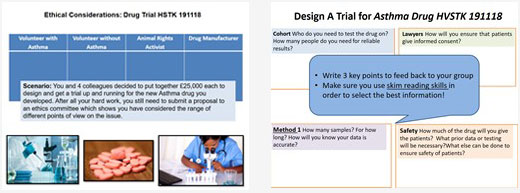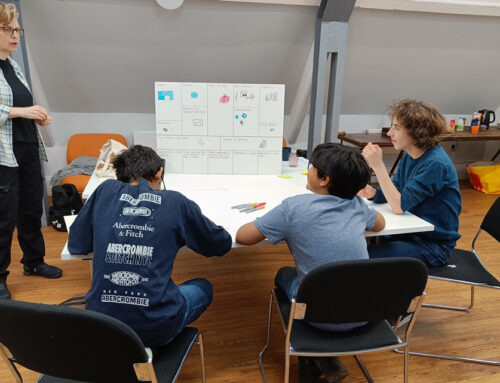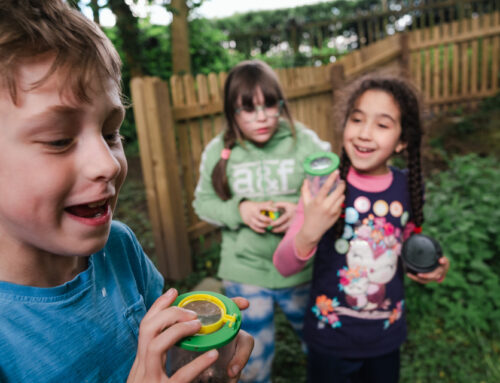Stretching high potential learners is a major challenge for teachers, alongside getting to grips with the technology and skills needed for remote learning which, like everything else in education, is moving at pace (I was tempted to say ‘unprecedented pace’ but I suspect you may have decided not to read on!).

Here are a few ideas from teachers at Parliament Hill School, a large Inner-London fully comprehensive girls’ school with a mixed Sixth Form consortium, LaSWAP.
Questioning

Questioning is one of the simplest yet most effective ways of challenging learners and making sure that they think deeply and from a variety of viewpoints. It’s also easy to use online. To improve questioning:
- Start with the rich or big question and then structure the learning experience around this, e.g., if you were teaching about the Titanic, your starting question might be, “If you had been the Captain of the Titanic, what would you have done differently?”.
- Allow more thinking time; use more open questions; insist on ‘no hands up’; accept the value of all sensible answers and use them to create a chain of reasoning.
- When watching a video or reading a text, pose the questions in advance, targeting the most challenging questions to the high potential learners, e.g., “Look for the information that is missing from this video. What else do we need to know?” or “How would you argue against the points being made?” or “What evidence can you find of bias?”
- Be ready with follow up questions. However well planned, your questions will lead to deeper, more divergent and creative thinking if you probe and push.
Some useful follow up questions include –
- Why?
- What do you think about Anisa’s answer? Why?
- What is similar in all these answers? Why?
- How might we improve on Lisa’s answer? Why?
- What do we need to add to Rosie’s answer? What else?
- Do you agree with the answer given by Ayesha’s group? Why?
- How did you work that out?
- Is Maria right? Why?
- Why is Claire’s answer good?
- You’re not sure, Rukshana. Let’s hear some answers from others… OK, which of those answers do you think was right?
- If you did know the answer, what might the answer be?
- What argument/s would you give against the answer?
- How would your answer be different if ….?
- Can you show this with another example in a different situation?
- Which of the answers we have heard so far is the best? Why?
I’ve made this into a bookmark which I laminate and give to all NQTs and trainees. Download the Questioning bookmark pdf
Breakout Rooms

One of the challenges with remote learning is achieving the same levels of rich discussion as in the classroom. The most success we have had has been by using breakout rooms, so that you can structure discussion tasks in much the same way as in a classroom.
A few ideas to get you started –
- Give all learners the same stimulus material before putting them into groups of 4, asking half the rooms to focus on arguing for and the other rooms arguing against. Stress that you want the groups to try to pre-empt what the other groups will say, so that they are ready to counter any arguments presented. Then, reorganise the breakout rooms so each has 2 learners who have prepared the arguments for and 2 against, so learners are well-prepared to debate. This activity could lead into a writing task or you could ask for brief feedback from a couple of groups, having gone into the breakout rooms to select who will feedback and ensuring that they rehearse it to the group first to raise the quality of the feedback.
- Use Plus, Minus, Interesting. This simple familiar tool will encourage deeper thinking and I would recommend creating a couple of groups of high potential learners so that they can really spark ideas off each other. Present the topic, e.g., ‘The Covid-19 vaccine should be given to teachers/school children before the over-70s’. Allow 3-5 minutes to discuss only the positives of doing this. When time is up, allow the same amount of time to discuss only the negatives. Finally, move to the third section, think about the questions that you might need to ask about this/what would be interesting about this course of action? You should have a wider range of points generated by structuring the thinking in this way.
- Put learners in pairs or 3s and ask them to take turns to persuade their group of something obviously ridiculous. Give them 3 minutes. For example, ‘Recycling should be illegal’, ‘Schools should only be online from now on’, ‘Prime numbers aren’t necessary’. The others in the group should challenge the points made.
- Assign roles, e.g., a high potential learner may be the chair or play Devil’s Advocate.
- Give each group a different role (the example about a drugs trial relies on you being able to give learners reading material but could be redesigned to use textbooks or a different topic). The most challenging role, lawyers in this case, would be given to the high learning potential group. However, all information is equally valuable, simply different levels of complexity.

Disadvantaged High Potential Learners

Exemplars can work well, e.g., an Art portfolio, but often they are just daunting. In 2020, like so many others, I learnt to make sourdough bread and I could show you one of my magnificent loaves. However, looking at a loaf does not show you how to recreate that loaf. To excel at sourdough bread making, you would need to go through the process step by step. Live modelling allows learners to see the process and, most importantly, hear how you think it through, e.g. “I think my introductory sentence needs to be more powerful – perhaps I could use ‘the power of 3’ here” or “The first thing I must do is find a common denominator”. This is especially important for disadvantaged high potential learners who may not have much support at home. Live modelling in remote learning will provide the structure and step-by-step guide that learners need when you are not able to stand by their side.
Give High Potential Learners Responsibility for Leading Parts of the Lesson
- At the start of the lesson, ask someone (or a pair) to lead the plenary and allow some time for them to plan it during the lesson.
- Ask high potential learners to prepare an activity to recap on the learning for the start of the next lesson.
- Ask a learner or a small group to listen to a podcast or TED talk, read an article or carry out a piece of investigation and allow 5-10 minutes for them to teach this to the class in the next lesson. For example, in a Citizenship lesson on discrimination, I gave three Year 7 high potential learners newspaper links to articles on the gender pay gap and they then reported back to the class.
- Ask your high potential learners to lead the feedback on a test or exam (perhaps just particular sections).
- High potential learners could create multiple choice quizzes to test the class on information learned.
- Ask high potential learners to summarise the 3/5 most important points from the lesson. You could ask them to do this as a 30 second radio broadcast or a Tweet.
- If the learner wouldn’t mind, use a piece of their work as an exemplar and ask them to talk through how they created it, step by step (and with how long it took them if appropriate – learners can often underestimate how long it takes to produce something great).
- Ask them to provide feedback on the lesson using www and ebi (what went well and even better if) so that they can suggest ways to make learning more challenging.
Using the Opportunity for Depth of Learning
Schools are ruled by time! For many high potential learners, this is unhelpful and prevents them from really delving deeply into a subject or topic they are interested in. Can you use the opportunities that remote learning provides for them to focus on something in great depth? Do they need to sit through another lesson on writing an essay or quadratic equations? Could they be set something completely different which would allow them to develop their skills and knowledge or pursue an area of interest?
In the classroom, it’s great to have a Curiosity Corner where students can freely access interesting newspaper or journal articles, more advanced reading or reading around a subject. With remote learning, this can be extended to TED talks, podcasts, the Guardian (which is free online), recorded university talks (UCL, Gresham College, etc), exhibitions, gallery and museum talks …
Perhaps they could then tell the class 3 interesting things that they found out, write a review or give a short talk.
Starting Points
- Mute buttons are marvellous and allow opportunities for learners to work at their own pace. High potential learners need less scaffolding (in fact, scaffolding can often inhibit them), so you can easily ask them to get started, whilst you demonstrate, live model or explain to others in the class, which high potential learners can often find so frustrating.
- It’s easy to set different work for different groups, e.g., using Assignments in Teams.
- Remember that high potential learners do not need to work their way through the easier questions before getting to the ones that challenge them. “If you want a bit more practice, start on the green column. If you feel confident, go straight to the blue column and if you feel you’d be able to teach someone else, go straight for the Challenge Column”.
I hope there is something in here that spark an idea or two. Good luck!
Joy Morgan from a very quiet Parliament Hill School

Joy Morgan is the Assistant Headteacher and Specialist Leader of Education at Parliament Hill School, London. Parliament Hill School received the Above and Beyond Awards Effective Provision in School Award in 2019.






